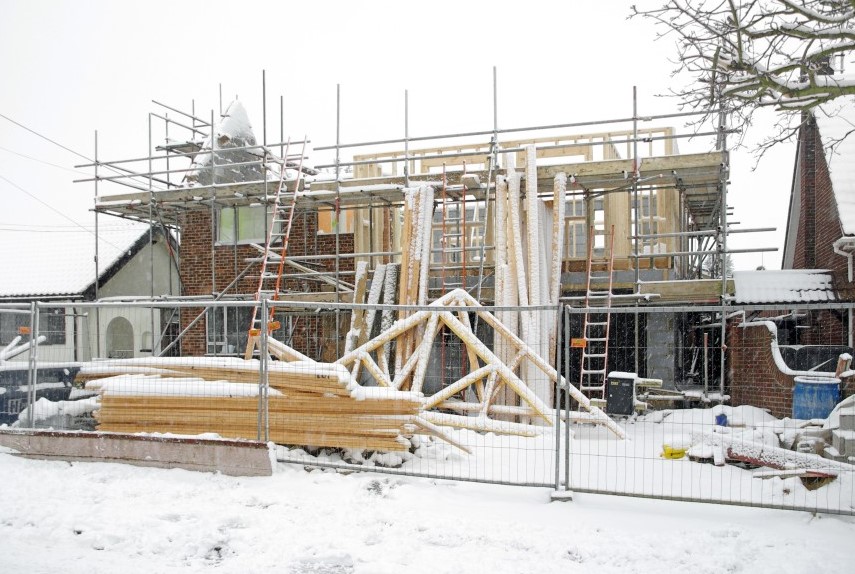How to Prepare Job Sites for Winter Weather
As the Michigan weather transitions to fall and then winter, it’s time to prepare construction sites and equipment for upcoming inclement weather. Freezing rain, ice, and snow can all lead to delays, damage, and injuries on job sites. If you take the time to prepare your workers and your equipment properly, you can minimize risks and protect your investments, while maintaining safe conditions for everyone.
Know the Risks
The first step to preparedness is to know the risks you’re facing. Checking the short-term and long-term forecasts for your area should become a regular part of your daily routine, if it isn’t already. Make sure you are familiar with what times of year you are most likely to face severe weather and heavy snowfall.
Types of Severe Weather
Severe weather isn’t just a hurricane or a blizzard. Even unusually cold temperatures can lead to life-threatening ailments. Types of severe weather that you should be prepared for include:
- Freezing temperatures
- High winds
- Flooding
- Snow
- Ice
- Thunderstorms
What to Prepare For
For each type of possible weather, create a plan of action for your workers, your equipment, and your job site.
Freezing temperatures can wreak havoc on diesel engines. Winterize your engines to keep them from being overworked; this includes changing the type of oil and fuel that you use. Your workers can also find themselves at risk of hypothermia if they continue on the job site as temperatures drop. Train them to recognize the signs, and have heaters ready.
High winds can cause severe damage to equipment and even topple incomplete portions of a project. Create plans at each construction site to ensure that the project is secure at the end of each work day. Train workers to secure scaffolding, tall equipment, and booms if high winds arise.
Flooding can occur over time or quite quickly depending on the location of your job site and the severity of the rain falling. If necessary, have a plan in place to move equipment and workers to higher ground as flooding begins or is expected in the area.
Snow can cause a multitude of problems, including freezing components of your machinery, blocking access to the job site or equipment, trapping workers, and even causing incomplete portions of a project to fall apart. If snow is expected, make plans to protect and cover all aspects of your construction zone.
Ice can be a severe fall hazard to employees, as well as freeze the inner components of your machinery. Properly cover and protect your equipment, as well as train employees on how to handle icy conditions.
Thunderstorms can occur at any time of year and can bring heavy rains, dangerous lightning, and high winds. Make sure that employees get to safety and away from scaffolding any time that lightning is in the area.
The Time To Prepare Is Now
Don’t wait until severe weather occurs, to prepare for it. Train your workers to recognize cold-weather injuries like frostbite, hypothermia, and trench foot. Provide training on how to safely work in snow and ice. Winterize machinery and add antifreeze to sprinkler systems. Add salt to walkways and roadways to prevent slips, and ensure all workers have proper personal protection equipment.
Keep Everyone in the Loop
Keep the lines of communication open with your staff. Communicate any upcoming weather concerns and plans of action with them, including any job site closings due to severe weather.
Finish projects before starting new ones so that no incomplete elements of a project can be destroyed due to inclement weather.
Keep emergency supplies on hand so that you’re fully prepared to tie down and secure equipment. Comprehensive first aid kits and flashlights will be critical for workers.
Keep a copy of your action plan posted at your construction site, where all employees can reference it. Post emergency contact numbers there as well.
Make a Winter Action Plan
Depending on your particular job site, your action plan will be specific to your needs. But as you create your action plan, consider these points:
- Bring in workers to prepare in advance
- Contact workers to convey any changes
- Secure scaffolding
- Secure lightweight materials
- Check water pumps
- Place filters over drains to prevent blockages
- Disconnect temporary power connections
- Cover holes to prevent flooding
- Secure and cover equipment when you can
- Remove temporary fencing and other structures that can blow away
- Cover windows with plywood
- Take photos for insurance
Be Proactive
The time to prepare for inclement weather is before it arrives. Take the time this fall to prepare for the winter so that you can minimize damage, delays, and injuries. Stay on top of weather forecasts so that there are no surprises. Be sure that your insurance policies are up to date.





